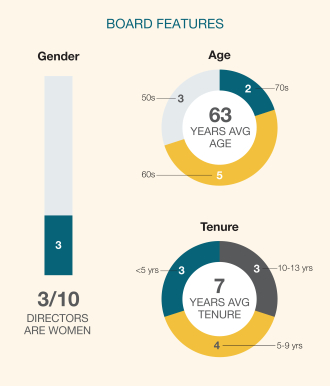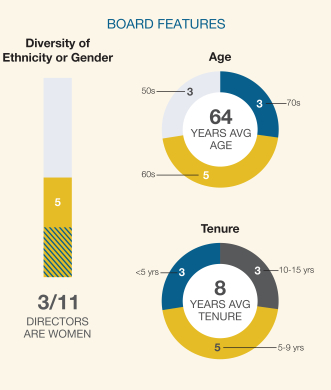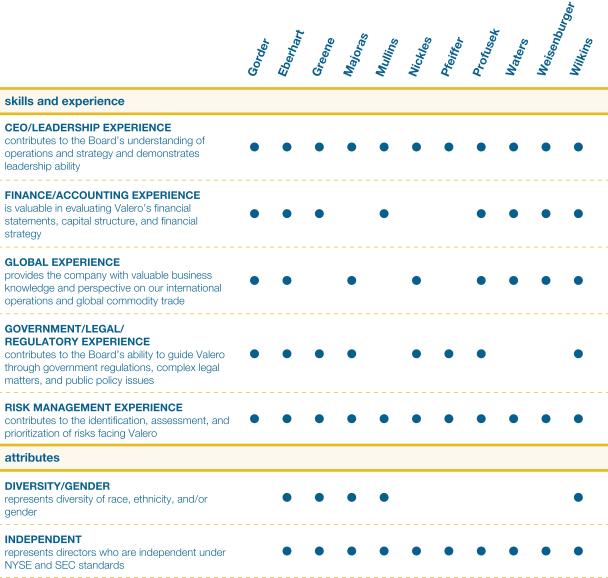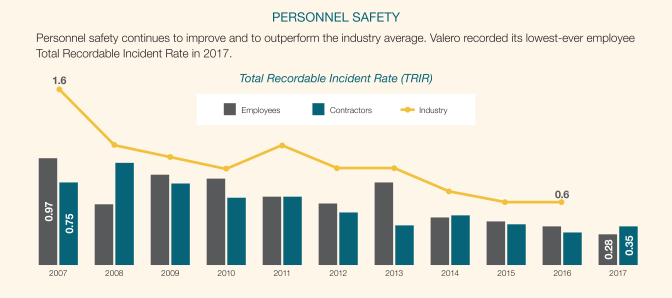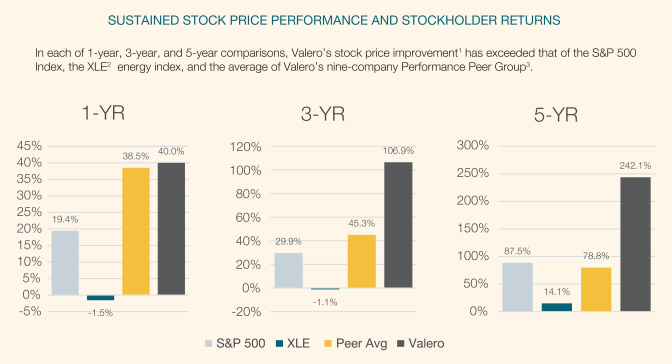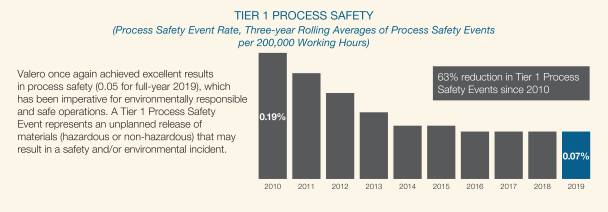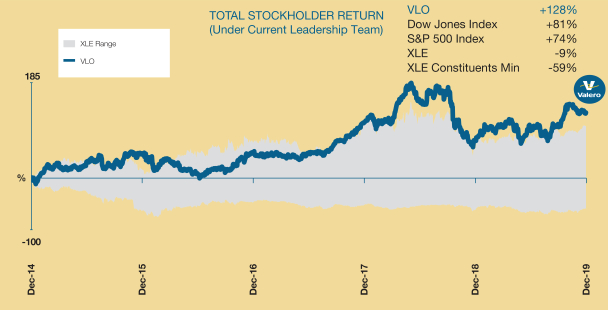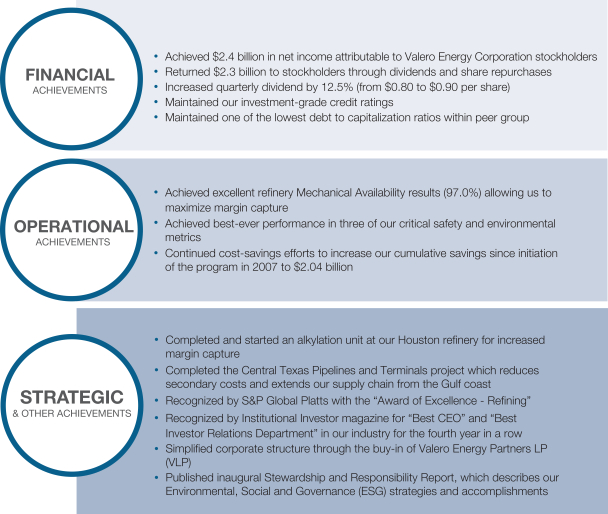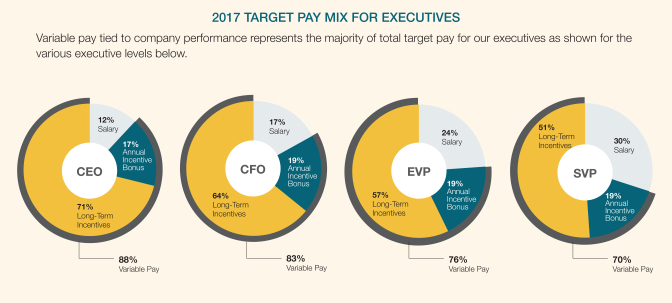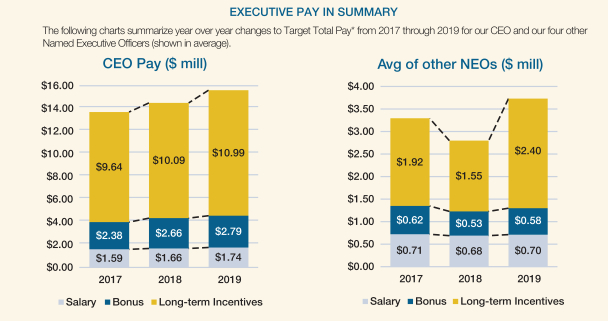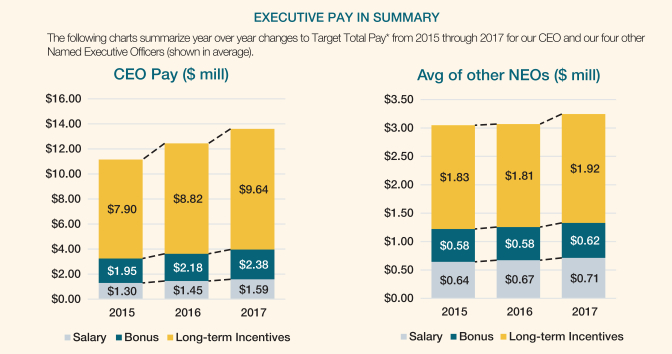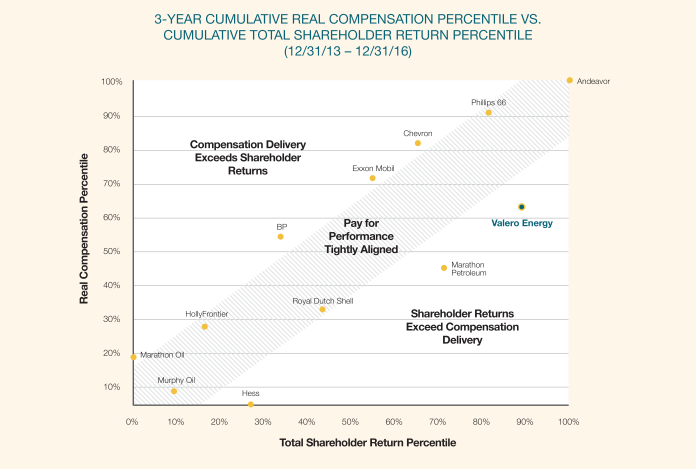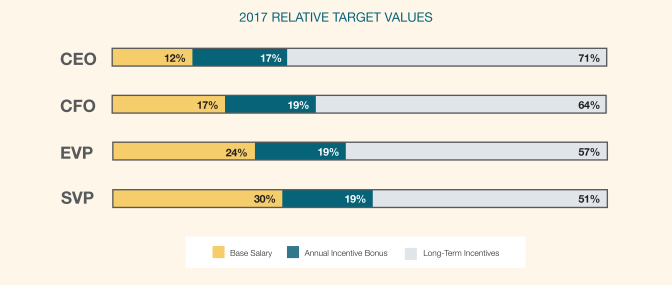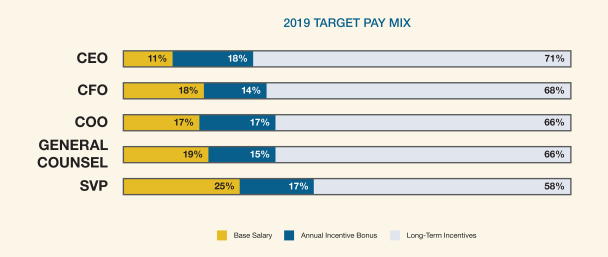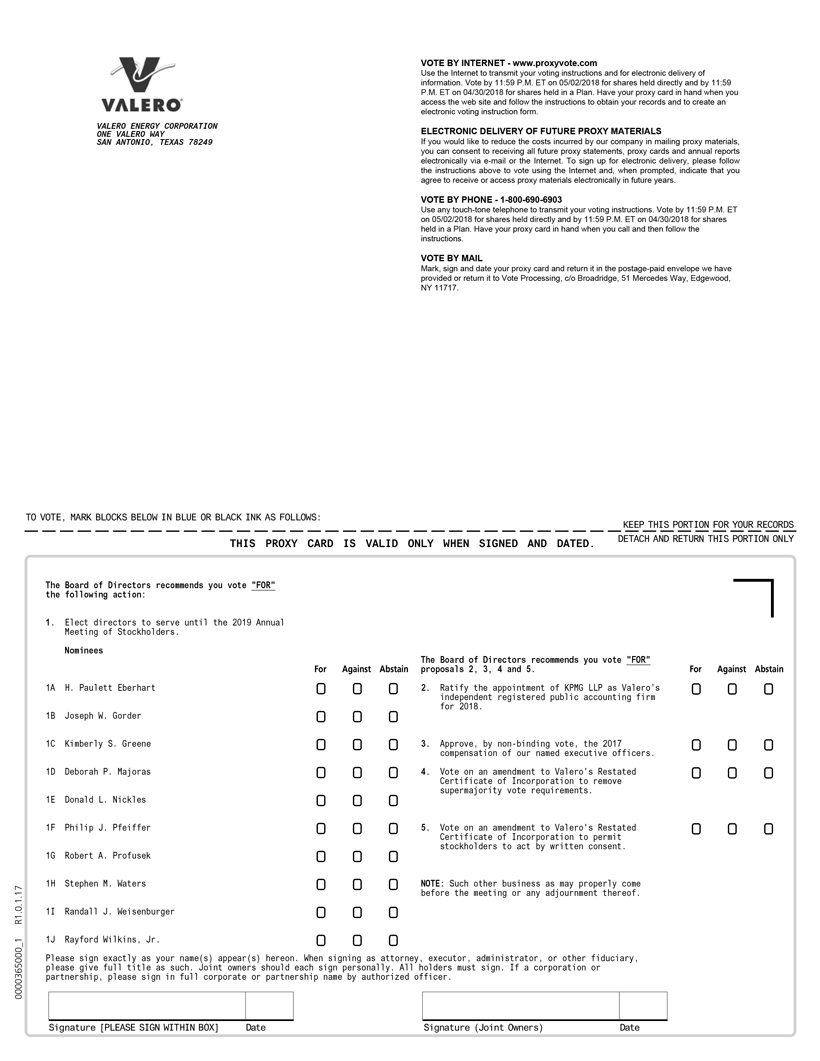PROPOSAL NO. 4—AMEND VALERO’S RESTATED CERTIFICATE OF INCORPORATION TO REMOVE SUPERMAJORITY VOTE REQUIREMENTSAPPROVE THE 2020 OMNIBUS STOCK INCENTIVE PLAN
(b)“Interested Stockholder” shall mean any Person (other thanAdministration.The Plan is administered by the corporation or any Subsidiary)Committee. The Committee is composed of directors appointed by the Board who or which:
(i)itself, or along with its Affiliates, is the Beneficial Owner, directly or indirectly, of more than 15% of the then outstanding voting stock; or
(ii)is an Affiliate of the corporation and at any time within thetwo-year period immediately prior to the date in question was itself, or along with its Affiliates, the Beneficial Owner, directly or indirectly, of 15% or more of the then outstanding voting stock; or
(iii)is an assignee of or has otherwise succeeded to any voting stock which was at any time within thetwo-year period immediately prior to the date in question beneficially ownedare non-employee directors, as defined by any Interested Stockholder, if such assignment or succession shall have occurred in the course of a transaction or series of transactions not involving a public offering within the meaning of the Securities Act of 1933.
(c)“Beneficial Owner” shall have the meaning ascribed to such term in Rule 13d-3 of the General Rules and Regulations 16b-3 of the Securities Exchange Act of 1934, as in effect on April 23, 1997. In addition, a person shall1934. The Committee is authorized, subject to the terms of the Plan, to determine which participants will receive awards, the times when such awards will be made, the “Beneficial Owner”times when such awards will vest, the types of any voting stock which such Person or any of its Affiliates or Associates has (A) the right to acquire (whether such right is exercisable immediately or onlyafter the passage of time), pursuant to any agreement, arrangement or understanding or upon the exercise of conversion rights, exchange rights, warrants or options, or otherwise, or (B) the right to vote pursuant to any agreement, arrangement or understanding (but neither such Person nor any such Affiliate or Associate shall be deemed to be the Beneficial Owner of any shares of voting stock solely by reason of a revocable proxy granted for particular meeting of stockholders, pursuant to a public solicitation of proxies for such meeting, and with respect to which shares neither such Person nor any such Affiliate or Associate is otherwise deemed the Beneficial Owner).
(d)For the purpose of determining whether a Person is an Interested Stockholder pursuant to paragraph (b) of this Paragraph (3),awards, the number of shares of voting stock deemed to be outstanding shall includeissued under the awards, and other terms and conditions of awards.
Share Counting. All awards granted under the Plan will be counted against the aggregate number of shares deemed owned through application of paragraph (c) of this Paragraph (3) but shall not include any other shares of voting stock whichthat may be issuable pursuantawarded under the Plan on a one-for-one basis. If an award granted under the Plan is subsequently forfeited or cancelled without the payment of consideration, then, subject to any agreement, arrangement or understanding, or upon exercise of conversion rights, warrants or options or otherwise.
(e)“Affiliate” and “Associate” shall have the respective meanings ascribed to such terms in Rule 12b-2 of the General Rules and RegulationsPlan, the shares allocable to the forfeited or cancelled portion of the award will be added back to the aggregate number available for grant under the Securities Exchange ActPlan, and may again be subject to an award granted under the Plan.
If, however, shares are delivered or tendered to Valero for repurchase to satisfy the exercise price of 1934, as in effect on April 23, 1997.
(f)“Subsidiary” shall mean any corporation of which a majority of any class of equity security is owned, directly or indirectly, by the corporation, provided, however, that for the purposes of the definition of Interested Stockholder set forth in paragraph (b) of this Paragraph (3), the term “Subsidiary” shall mean only a corporation of which a majority of each class of equity security is owned, directly or indirectly, by the corporation.
(g)“Continuing Director” shall mean any member of the Board of Directors of the corporation (the “Board”) who is unaffiliated with the Interested Stockholder and was a member of the Board prioran option award, those shares may not be added back to the time thataggregate number of shares available for grants under the Interested Stockholder becamePlan. In addition, if any shares are withheld from issuance to satisfy tax obligations associated with an Interested Stockholder, and any director who is thereafter chosen to fill any vacancyaward, those shares will count against the aggregate number of shares available for future grants under the Plan.
Limitations on the Board or who is elected and who, in either event, is unaffiliated with the Interested Stockholder and in connection with his or her initial assumption of office is recommended for appointment or election by a majority of Continuing Directors then on the Board.Awards. The following limitations apply:
(h)“Fair Market Value” shall mean (i) in the case
The exercise price of stock the highest closing sale price during the30-day period immediately preceding the date in questionoptions cannot be less than 100 percent of a share of such stock on the Composite Tape for New York Stock Exchange listed stocks, or, if such stock is not quoted on the Composite Tape, on the New York Stock Exchange, or, if such stock is not listed on such exchange, on the principal United States securities exchange registered under the Securities Exchange Act of 1934 on which such stock is listed, or, if such stock is not listed on any such exchange, the highest closing bid quotation with respect to a share ofsuch stock during the30-day period preceding the date in question on the National Association of Securities Dealers, Inc. Automated Quotations System or any system then in use in its stead, or if no such quotations are available, the fair market value on the date in question of a share of such stock as determined by the Board in accordance with Paragraph (4) of this Article VIII; and (ii) in the case of property other than cash or stock, the fair market value of a share at the time the option is granted.
The grant price of a stock appreciation right (“SAR”) cannot be less than 100 percent of the fair market value of a share at the time the SAR is granted.
Repricing or the cashing out of stock options and SARs is not permitted, subject to limited exceptions in connection with certain extraordinary transactions affecting Valero as further specified in the Plan.
No participant may receive during any calendar year awards that are to be settled in shares covering an aggregate of more than 1,000,000 shares.
A non-employee director may not receive in any calendar year awards that are to be settled in shares having an aggregate fair market value that is greater than $500,000.
No participant may receive during any calendar year awards that are to be settled in cash covering an aggregate of more than $20,000,000.
The terms of awards may not exceed 10 years.
The Plan does not contain an evergreen provision.
Vesting. No award granted under the Plan shall become exercisable or vested prior to the one-year anniversary of the award’s date of grant; provided, however, that, such property onrestriction shall not apply to awards granted under the datePlan with respect to the number of shares which, in questionthe aggregate, does not exceed five percent of the total number of shares that were authorized to be issued as awards under the Plan.
Types of Awards. The Plan permits grants of: (i) restricted stock and restricted stock units; (ii) stock options (including incentive and non-qualified stock options); (iii) SARs; (iv) performance awards of cash, stock, or other securities; and (v) other stock-based awards (e.g., stock unit awards). Awards may be granted alone, in addition to, or in combination with, any other awards under the Plan or any other compensation plan. Awards can be granted for cash or other consideration as determined by the BoardCommittee or as required by applicable law (or for no cash consideration). Awards may provide that upon the grant or exercise thereof, the holder will receive cash, shares or other securities, or any combination of these.
Restricted Stock and Restricted Stock Units. Restricted stock is an award of shares subject to a restriction period specified in accordance with Paragraph (4) of this Article VIII.
(i)In the event of any Business Combination in whichaward. During the corporation survives, the phrase “other consideration to be received” as used in paragraphs (b)(i) and (ii) of Paragraph (2) of this Article VIII shall includerestriction period, the shares may not be transferred or pledged and are subject to forfeiture. Potential events of Common Stock and/orforfeiture include early termination of employment. The holder is otherwise usually treated as a registered stockholder with the right to receive dividends and vote the shares during the restriction period. Restricted stock units are similar to restricted stock except that the award takes the form of anystock units instead of shares. During the restriction period, a holder of restricted stock units may be paid cash (dividend equivalents) that are equal in timing and amount to share dividends, but does not have voting or other classstockholder rights. The units may be settled in cash or shares.
Stock Options and Stock Appreciation Rights. Stock options give the holder the right to purchase shares at the exercise price specified in the award. SARs give the holder the right to receive an amount in cash or shares equal to the spread between the exercise price specified in the award and the market price of outstanding votinga share at the time of exercise. SARs may be granted alone or with stock retainedoptions. Stock options and SARs granted under the Plan are subject to the terms and conditions determined by the holdersCommittee, except that the exercise price cannot be less than 100 percent of such shares.the fair market value of a share at the time of the grant and the maximum term is
| | | | |
| | 20182020 PROXY STATEMENT | | 6775 |





















